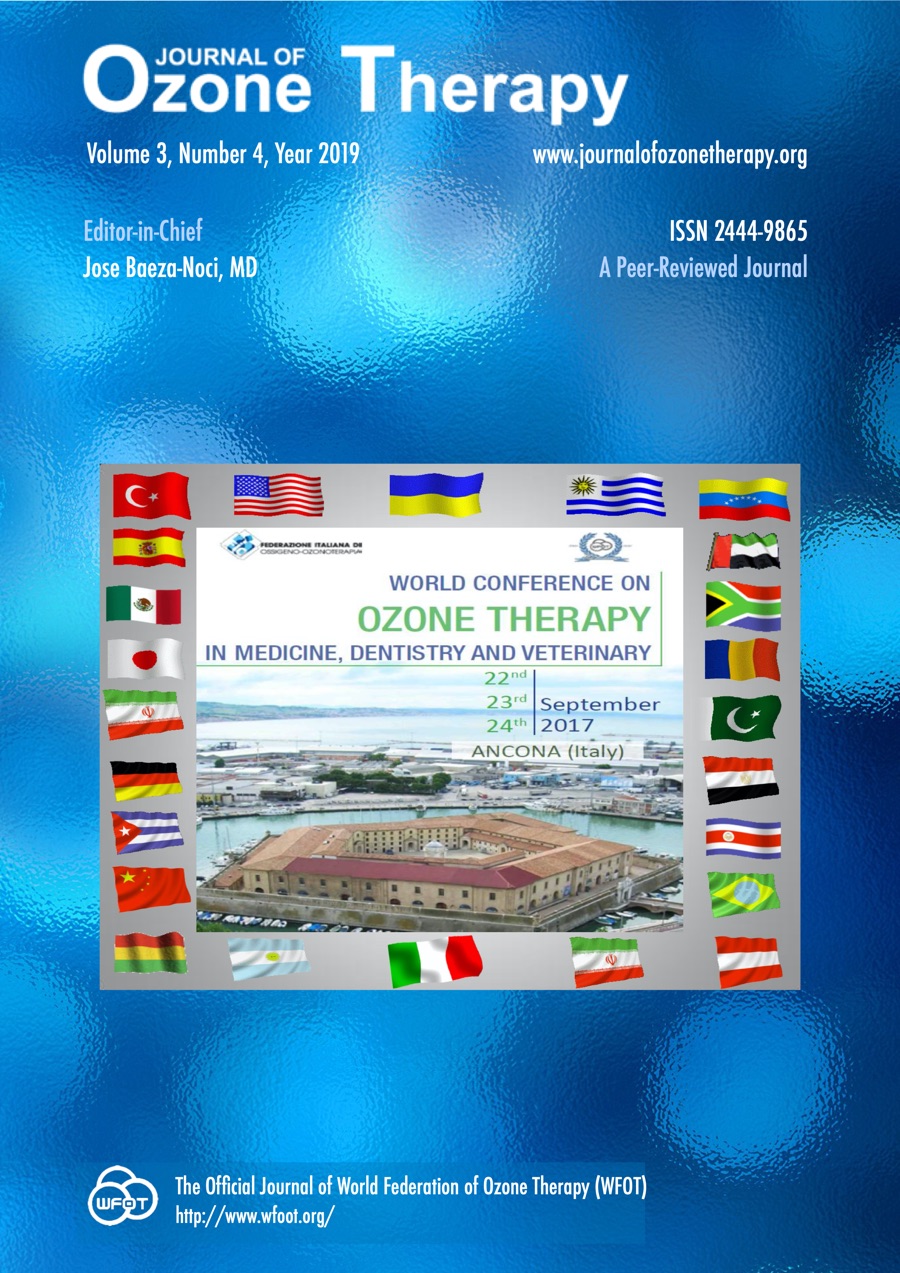DNA analysis of root canal teeth and cavitation surgery of sockets utilizing ozone water irrigation: a pilot study [abstract]
DOI:
https://doi.org/10.7203/jo3t.3.4.2019.15532Keywords:
root canal, ozone therapy Abstract
Abstract
PURPOSE: Root canal therapy in dentistry has been the standard of care to save an infected for many years.1 It has been a premise that once the root canal procedure has been performed, the tooth is free of infection and poses no harm to the patient's health. With the advent of PCR DNA analysis2, root canal teeth and the surrounding bone can be analyzed for toxicity. Current testing can determine 90 plus bacteria and viruses that may be associated with an assay. 9 subjects were selected for this study to determine the toxicity of the root canal tooth that was extracted and if this cavitation protocol decreased bacterial and viral load in the associated bone.
METHODS: Each tooth was extracted and sent for analysis. The extraction socket was decorticated and cavitated with a specific protocol using ozonated water as an irrigant. The patients returned approximately one month later for DNA analysis and placed on a Biocidin (an herbal antibiotic) protocol and to return approximately one month later for analysis.
RESULTS: DNA analysis revealed significant bacterial and viral infections of the root canal teeth. After cavitation surgery, the bacterial and viral loads in the bone significantly reduced using the cavitation protocol with ozone water irrigant. The bacterial load seemed to decrease and slightly change with the Biocidin regimen.
CONCLUSION: Understanding the toxic effects of root canal teeth, and a protocol to remove them properly, this pilot study has shown unequivocally, that this protocol including ozonated water irrigant and an herbal remedy reduced the remaining infection in the bone.
 Downloads
Downloads
 References
References
Rothchild JA, Harris RE, Mollica PJ. Current concepts of oxygen ozone therapy in the United States. Int Journal Ozone Therap. 2010;9(2):105-108.
Valones MA, et al. Principle and application of Polymerase Chain Reaction in medical diagnostic fields: A Review. Braz J Microbiol. 2009;40(1):1-11. doi: 10.1590/S1517-83822009000100001.
Downloads
Published
How to Cite
-
Abstract753
-
PDF243
Issue
Section
License
Journal of Ozone Therapy applies the Creative Commons Attribution-NonCommercial 4.0 International License (CC BY NC 4.0) license to works we publish.
Under this license, authors retain ownership of the copyright for their content, but allow anyone to download, reuse, reprint, modify, distribute and/or copy the content as long as the original authors and source are cited. No permission is required from the authors or the publishers.
You may not use the material for commercial purposes.
Appropriate attribution can be provided by simply citing the original article, provide a link to the license, and indicate if changes were made.
You may do so in any reasonable manner, but not in any way that suggests the licensor endorses you or your use.




